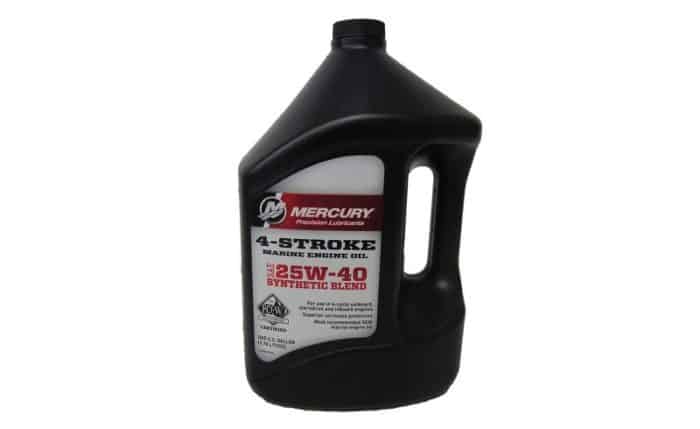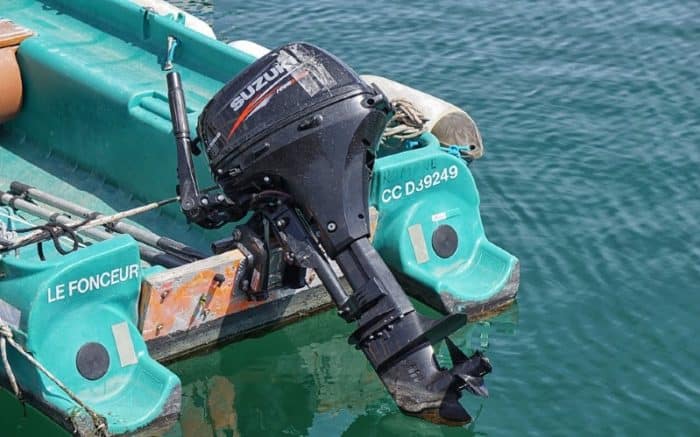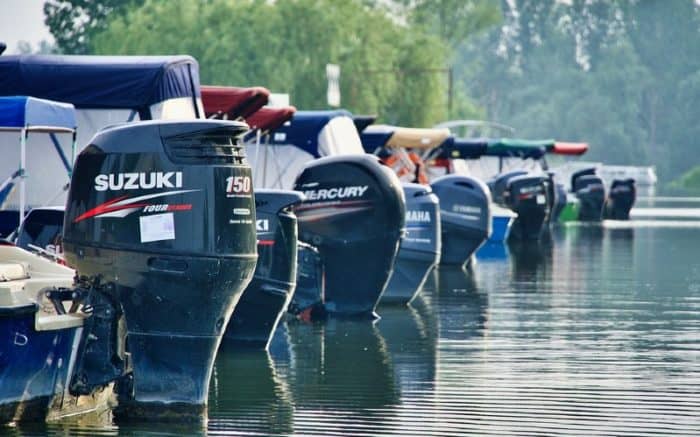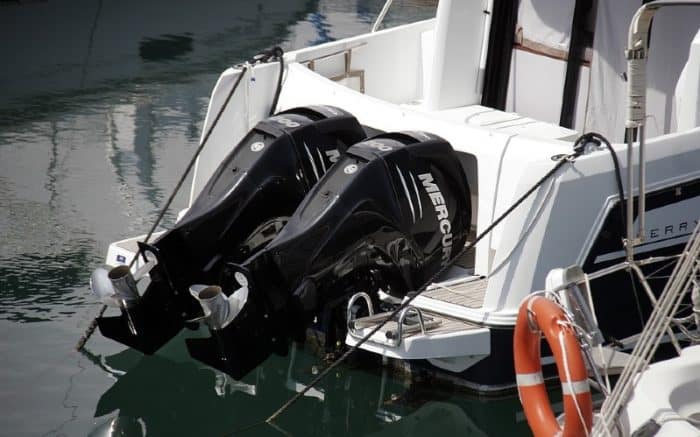What to Do When Your Boat Engine is Overheating
An overheating engine can be a real burden to deal with. Time and money may have to go into fixing it if you can’t figure out what’s wrong. Luckily, there are warning signs you can look for. Also, there are some tips and tricks that you can look into if you want to fix the problem. Let’s take a look at what’s going on, how to fix it, and how to prevent it from happening again.
The Danger of an Overheating Engine
When your car engine overheats you can be stranded on the side of the road until you get a tow. You can see how that could be much worse if you’re on the lake or even the ocean in boats, instead.
An engine that runs too hot can seize up. You risk cracking the engine head itself, warping metal, burning oil, and parts seizing. It can totally destroy the engine leaving you with a big repair/replacement bill. That’s in addition to being stuck and in need of assistance. Obviously it’s something you want to prevent.
What Causes Marine Diesel Engines to Overheat?
Unfortunately, there are several reasons your engine can overheat. That makes troubleshooting a little tougher than you might like it to be. You’ll need to pay attention to the other symptoms to help narrow the issue down.
Clogged Cooling System
Your engine’s cooling system needs to be able to do its job without obstructions. That makes sense, right? The entire cooling system can for outboard or inboard engines fail in any number of ways and when we say “cooling system” we’re talking about all the parts that work together. There’s a thermostat, the engine oil, an exhaust manifold and heat exchanger. There’s tubes, hoses, coolant, and more. So what can you do to ensure the thing as a whole works? Clean it.
Your cooling system can build up scum in freshwater but it can do a lot worse in sea water as lime and salt and more clog things up. This build up restricts the flow of coolant and that means your engine will run hot.
An easy and eco-friendly solution to this is to use some vinegar and water. You can pump a vinegar solution through your engine and give it some time to eat away at that limescale, salt, dirt and debris.
Mix water to vinegar 2 to 1. You’ll need to put it in a container large enough to position the engine over. Remove the prop from the engine to reduce accident risk. Submerge the water intake and turn the engine on. Make sure the water exits back into the container so it can keep cycling through the engine. Let it run for 15 to 20 minutes like this. At this point it’ll probably be pretty hot so you’ll want to stop, otherwise you’ll be unintentionally overheating your engine even more.
Let the mix cool or, if you don’t mind spending the money on vinegar, just swap in some new, cold stuff. It might take a few hours in total of doing this to clear everything out.
Cleaning Clogs on the Fly
Got a problem you need to fix at sea?
- Immediately shut down the engine.
- Have your fishing partner keep sharp eye out for traffic.
- Drift for a while to allow the debris that “could” be blocking the intake to float free while allowing the engine to cool. After the engine is cool you may have to go in reverse to dislodge the obstruction.
- Meanwhile, you should open the engine room hatch and check the sea strainer.
- Be sure to close the through-hull valve before taking the top off the strainer.
- Once the wing nuts have been removed, take out the strainer basket and check for debris.
- If there is no debris, gently “crack” the through hull valve to see if you have raw water flow from the outside coming into the strainer.
- If you do not have water flow you know the intake is clogged.
- Put the sea strainer back together and be sure to open the valve.
- Once the temp gauge reads in the safe range, start the engine and head home watching the temp gauge closely.
What if, however, you checked the water flow to the strainer, it was okay and the strainer was clean. What is next?
- If you have water flow you know the problem is not a clogged intake.
- Loosen the clamps and remove the hose where it enters the water pump. Open the seacock and check for water flow there.
- If you don’t have flow, this hose is blocked. If you do you must go further.
- Take the face off the water pump and check the impeller. The fins should be pliable and not cracked. If it appears worn, replace it with the spare that you “always carry.”
- If the impeller appears to be in good shape it is most likely a problem with the water pump itself.
Check the Oil
Just like in your car, your boat engine needs oil to stay cool. When gears and pistons are not lubricated, friction builds up and warps or cracks parts faster than you’d think. Keep an eye on oil levels and make sure you’re keeping it clean as well. Dirty oil that’s full of debris can lead to an overheating engine. Your engine manual should tell you how often you need a full change.
Check the Thermostat
Engine thermostats are deceptively simple tools. When an engine is cold the thermostat keeps a valve closed. This prevents coolant, in this case water, from flowing through. You actually don’t want to cool an already cold engine, it won’t work as efficiently as it should. When it gets hot enough, the valve opens. In some this is governed simply by wax. Heat melts the wax in a small component and the valve opens. Cool water can rush through and cool the engine.
If the thermostat gets stuck, maybe it’s corroded or dirty, then the valve will not open and cold water won’t filter through. It’s worth keeping an eye on the thermostat for just that reason.
Water Pump Failure
One of the first specific places you want to look if your engine is overheating is the water pump. Most engines are water cooled because why wouldn’t they be? You’re right on the water. You can tell this is working when you see the water discharge shooting back out like someone left the hose on.
You may still have the outlet cooling water flowing even if there’s a problem. Check the temperature of the water as it’s shot out. If it’s hotter than it should be, the pump could be struggling. That means it’s not getting cool water across the heat exchanger fast enough which is causing the water to get too hot. That in turn means your engine can’t lose heat fast enough, so it will overheat.
If the stream is sputtering or weak, you could have a clog. Some kind of debris or build up could be interfering with the proper flow of water. The vinegar mix we already mentioned should help with this.
Need a fix on the fly? Remove your galley’s electric pressure water pump or your electric bilge pump or any other electric pump that you can put into service and rig it between the raw water intake and your engine’s cooling system, bypassing the broken raw water intake pump.
Check Your Water Pump Impeller
There are a few reasons why water pumps might not be pumping water, as we saw. But another potential issue is the impeller. The impeller is the small propeller-like part inside of the pump that rotates to suck water up into the pump. If the impeller fails it’s just like the prop on your outboard failing. Power is still available and the engine is trying to work, but nothing will happen. This can lead to very fast overheating problem.
Impellers are actually very resilient and handle a lot of abuse. The problem is that if they dry out they can become brittle and crack or fall apart. In the excess heat, if there’s no water, a rubber impeller may even melt. So you need to make sure the impeller is lubricated with water all the time.
Don’t Forget the Heat Exchanger
As the name implies, a heat exchanger exchanges heat. Engine coolant runs through it. Cool water is taken in from outside your boat through inlet tubes. This hot coolant transfers heat to the cool water as it cycles through. This, in part, cools your engine down.
There are circumstances in which your heat exchanger won’t be working as it should. In particular, if there is debris caught in the water inlet, it can prevent the flow. This in turn means the cool water can’t take the heat from the coolant, and the temperature will continue to rise.
Exhaust Manifold Problems
Your engine burns fuel to create power and that produces hot gases or exhaust. The exhaust manifold is what carries that hot exhaust away from the engine. Exhaust runs through an inner pipe while an outer pipe cools it with raw water. Your exhaust manifold has a life expectancy of just 6 years or so. It could last longer and it may last less time. But expect, on average, at least six years.
The mixture of exhaust gases, which are corrosive, and water, will wear down any manifold over time. Holes can form due to corrosion and water can enter the manifold itself. Debris can also get clogged in here and will need to be flushed.
How to Prevent Overheating
Now you know where to look for reasons your engine overheated. It’s also good to prevent the need for any of this. That’ll save a lot of time and money. Preventative maintenance is always the best plan.
- Check your oil before heading out on any boat trip. Make sure it’s topped up and clean. Change it according to the schedule set by your engine’s manufacturer.
- Keep your engine clean. If you spill oil, make sure you get it cleaned up. Try to avoid boating in water that’s too shallow. The closer your engine gets to the bottom of the water, the more likely it is to kick up silt and debris that gets sucked inside. All of that will cause it to clog and overheat.
- Make sure you flush your engine after every trip. This is especially important if you boat in saltwater.
- Start the engine and check the output before heading out. Make sure the pressure is normal and the temperature is warm but not hot.
- Take the cowling off your outboard motor and check the engine compartment for fuel or water leaks after every trip. If everything looks good, give all your moving parts a squirt of something like WD-40 to keep them clean and lubricated.
- Periodically check lines and fittings for signs of cracks or corrosion.
The Bottom Line
An overheating engine can lead to a host of problems. Not only is it an inconvenience but it can also end up costing you a hefty amount of money. When boat engines overheat badly enough, they can require rebuilds or replacements. Worse, they can put you and your passengers in danger. That’s why it’s important to both do your best to prevent them, and be aware of what to do if they happen.
Categories: nauticalknowhow
















